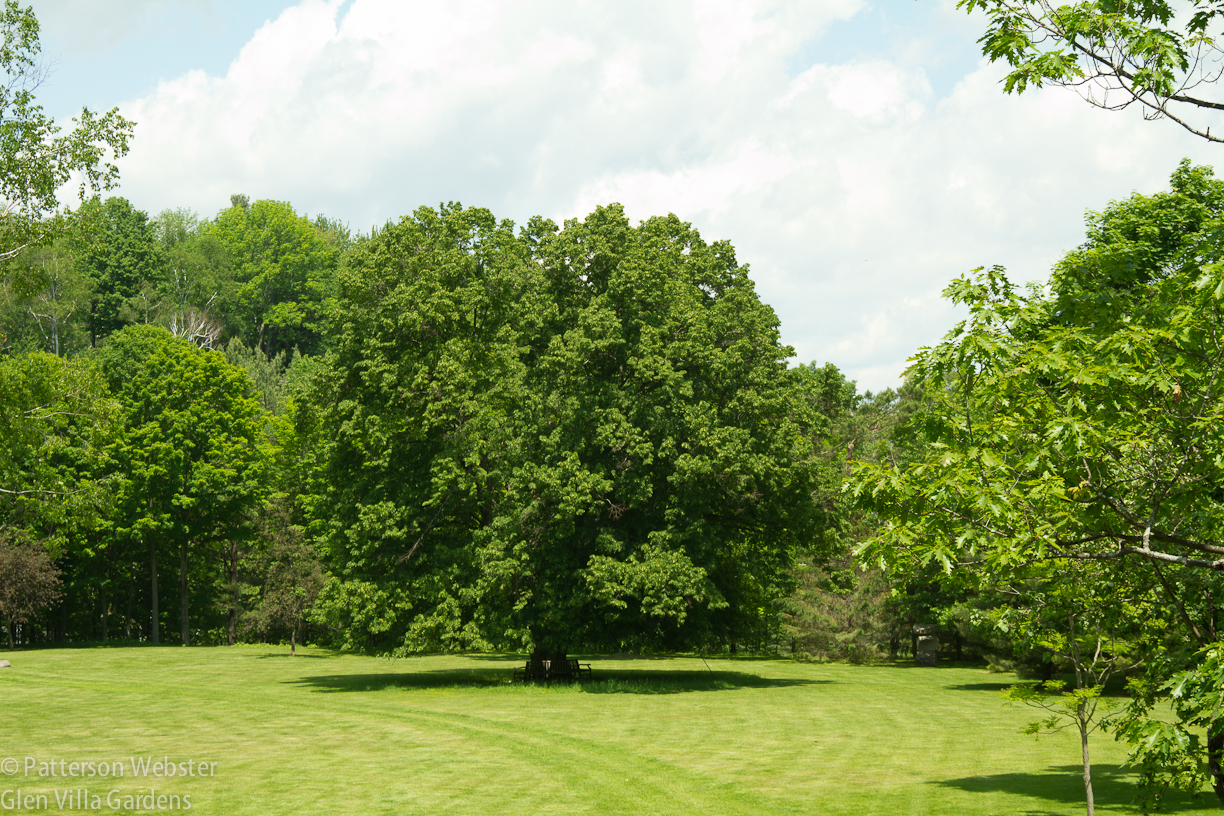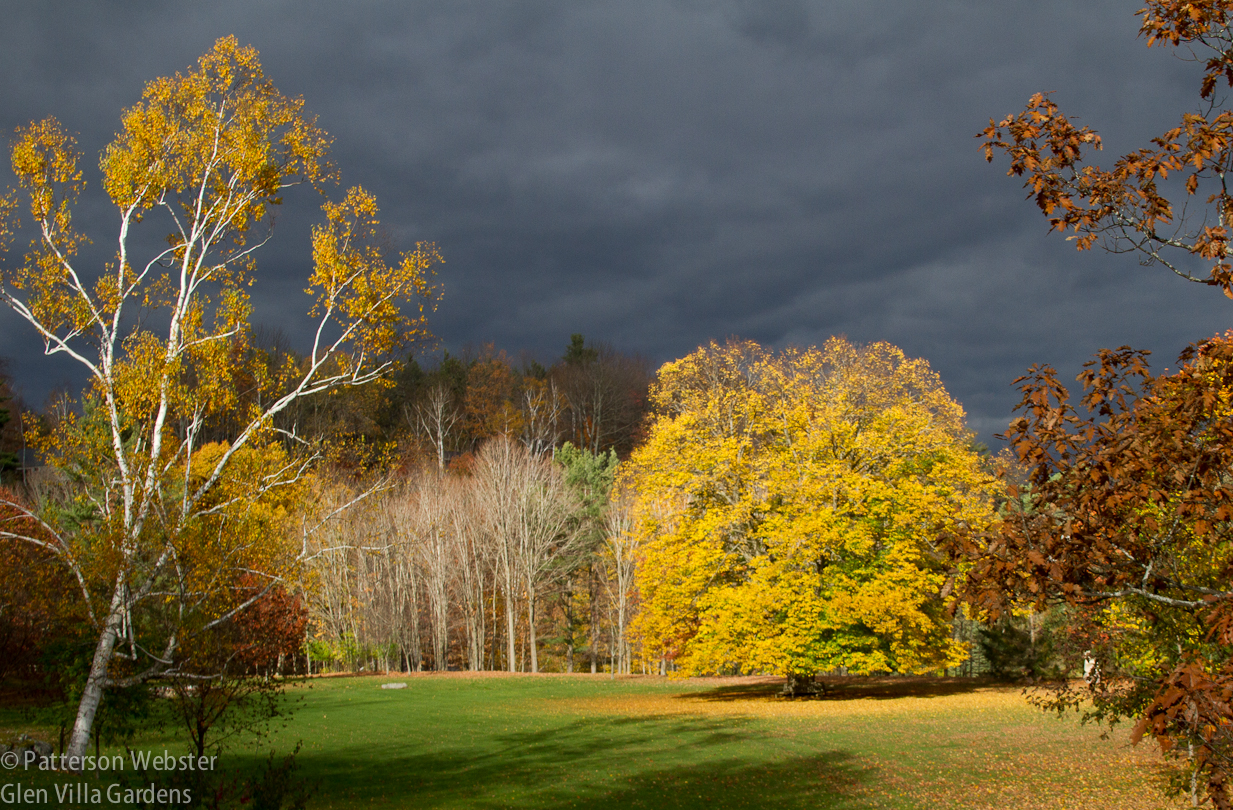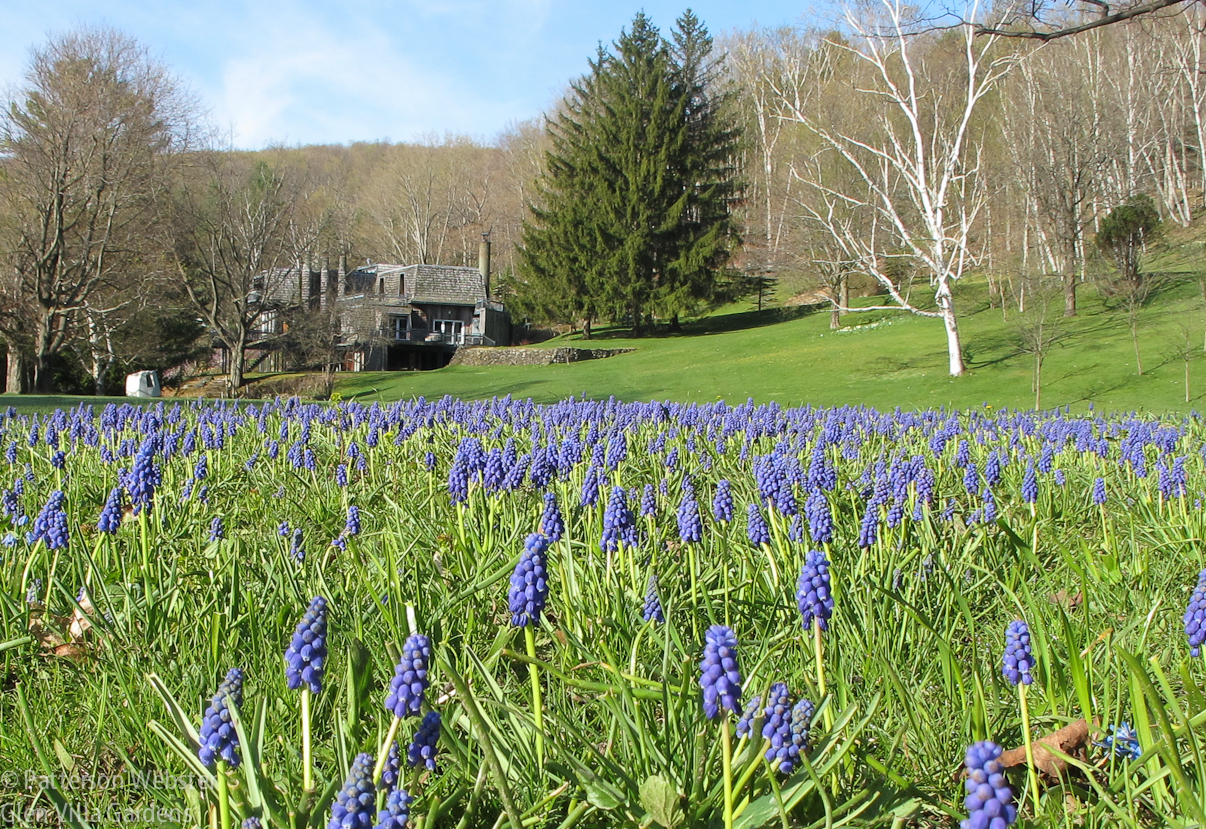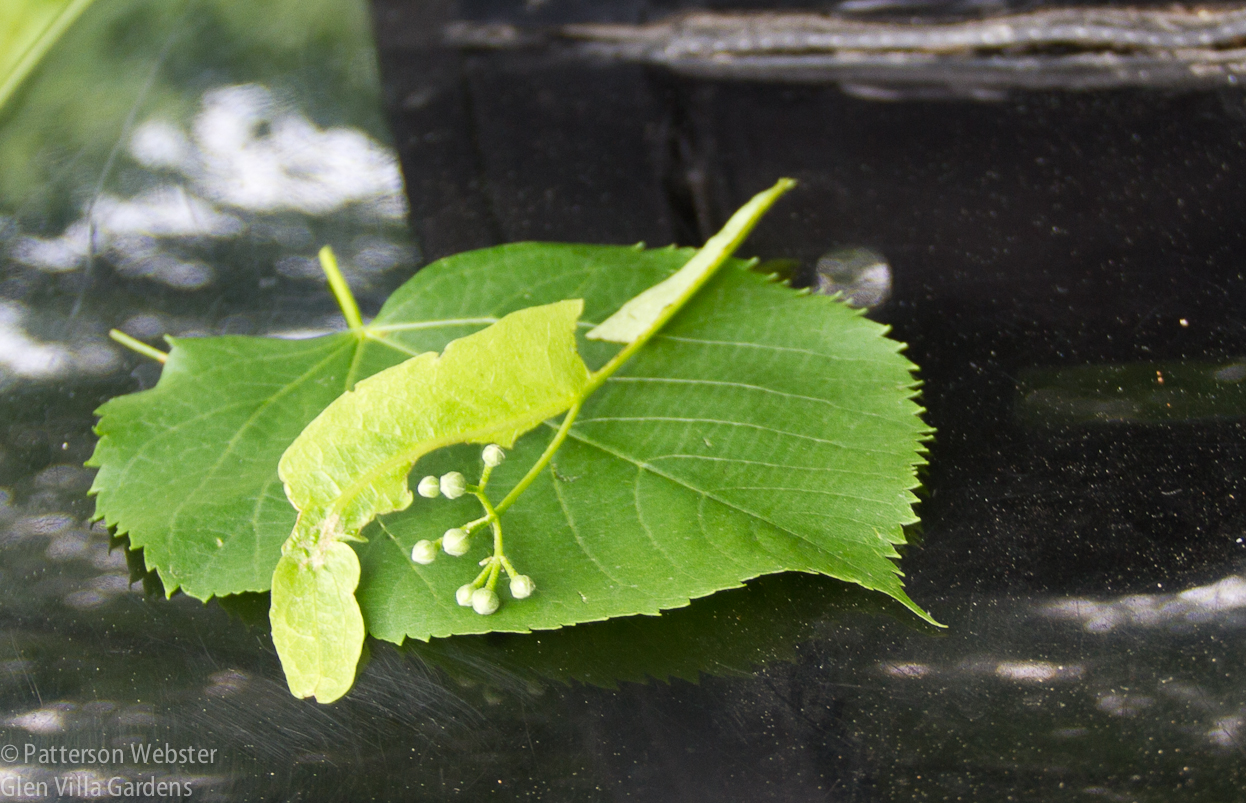Sometimes trees are part of a forest, sometimes they stand alone. As a child, the lone tree at the top of the field by my grandparents’ house in the Blue Ridge mountains of Virginia was a beacon, calling me out of the fenced farmyard and into adventure. The fact that it was a forbidden destination only made the tree more appealing.

I took this photo of the old poplar tree — probably a liriodendron, or tulip poplar — about a dozen years ago, looking down from the hilltop towards the old barn. The farmhouse is out of the picture, off to the right.
Is that why the single linden, or basswood, tree at Glen Villa speaks to me so memorably? It stands alone at the end of the big lawn, not silhouetted against the sky like the tree at my grandparents’ farm but backed by a hillside of trees, shades of green that in autumn become magnificence incarnate.
I’ve travelled a lot this year, and haven’t been at Glen Villa, my house in rural Quebec, to chronicle the linden’s growth. Not that it is growing much: at 100 years or more, it has reached its full height and girth. Still, having decided to be part of Lucy Corrander’s ‘following a tree’ meme at Loose and Leafy, (thanks as always, Lucy) each month I’ve found something to say.
In January, I choose my tree, thankfully discarding the little contorted hazel (Corylus avellana ‘Red Majestic’) that I ‘followed’ in 2014. (I came to dislike that tree quite heartily. I’m not unhappy to report that winter almost did it in.) In February, escaping the winter’s brutal cold in an only slightly warmer South Carolina, I wrote about the various names the tree goes by, and why I call it a linden rather than a basswood, the more commonly used name in these parts. In March I wrote factually about the tree and how, for me, it conforms to the Platonic ideal form. As the snow was melting in early April, I described what is underneath the tree — a blue haze of grape hyacinth (Muscari armeniacum) that fills the tree’s shadow line. I was in Italy in May, and without access to images of the linden, I photographed the beautiful trees that were blooming around me and showed them instead.
But now it is June, and I’m home again. I missed this year’s blue haze of muscari altogether — a pity, since for me it signals the beginning of the growing season.
Yesterday, under perfect early summer conditions, the linden showed itself in full glory, fat and round and leafy.

Blue muscari mimic the shadow line of the tree, like a bruise healing after a hurtful winter. We leave the grass longer to allow the muscari foliage to die back naturally.
The blossoms that give the linden its distinct perfume are beginning to form now. They aren’t showy — in fact, they are quite inconspicuous. For several weeks they and the paler green leaflet that accompanies them will hang down heavily, giving the tree a despondent air — like a child dropping her head in shame.

Although the tree looks droopy, there is no reason for it to be ashamed of itself. Once the buds open, the air will be sweetly perfumed. Bees love the nectar.
A close-up of the leaf shows its rounded shape and sharply serrated edges.
I’m sure some botanist can properly identify the thin pale green leaf-like form that is growing above the flower buds. A Wikipedia search suggests it may be a phyllode (plural phyllodes), defined as a ‘flattened petiole or leaf rachis that resembles and functions as a leaf and may or may not be combined with actual lamina.”
That may be, but since I had to look up three of the terms, I am far from certain. So while I can’t name it, I can admire the paler shade that contrasts with the deeper green heart-like leaves. And I can love the tree that both are part of.
Which I do.









